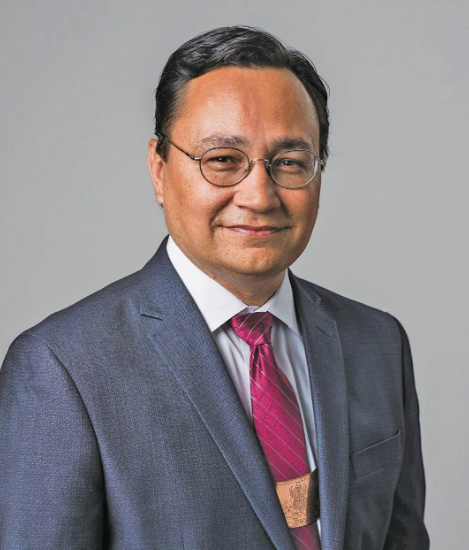
- Details
- By Chuck Hoskin Jr
Guest Opinion. Cherokee Nation is large and growing, with more than 460,000 citizens making us the largest tribe in America. The hundreds of thousands of Cherokees of all ages deserve world-class facilities serving our health, education, safety, and community life and culture. That’s why we have undertaken the largest single capital investment in our history, with almost $1.2 billion allocated to more than 60 construction projects.
These investments reach every corner of the 7,000-square-mile Cherokee Nation Reservation in northeast Oklahoma. Projects span from community centers to health care facilities and from Head Start centers to an expanded headquarters complex. Altogether, they exemplify Deputy Chief Bryan Warner’s and my dedication to building a stronger and more accessible Cherokee Nation.
I am especially proud of our investments in rural communities across the reservation. Places like Marble City and Kenwood have often been overlooked, but they are essential centers where the Cherokee language flourishes and so many families live by core Cherokee values.
This is not merely about infrastructure; it is about providing our citizens with the means to thrive in their hometowns. From the state-of-the-art Head Start facilities in Kenwood, featuring heated floors for our youngest learners, to the Edna Holland Wellness Center in Stilwell with its indoor walking track, we are creating spaces that foster a sense of belonging and pride.

The comprehensive investments show our holistic approach: $551.1 million in health; $194.4 million in education; $124.2 million in government infrastructure; $83.4 million in wellness; $76.5 million in human services; $67.8 million in community projects; $63.2 million in language initiatives; $10 million in career services; $3.1 million in infrastructure; and $2.7 million in law enforcement.
These numbers are not just figures; they represent our commitment to improving every aspect of life for our Cherokee people.
One of the cornerstones of this transformation is our new hospital in Tahlequah, which is under construction now, and the forthcoming clinic in Salina. Both these new sites will provide crucial health services and allow citizens to stay closer to home and family when they need care.
We are also adding a public safety building, a 61,500-square-foot hub for our emergency operations. The facility will house over 90 employees and include a training center for the first responders who help keep our communities safe.
Our capital investments also grow the local economy and provide excellent work opportunities for our citizens. Even when we demolish outdated structures, like the old hotel on the W.W. Keeler Tribal Campus, we are making room for modern facilities that will better serve future generations.
Cherokee Nation is a leader for Indian Country and the best in model in Oklahoma for how a government can uplift its citizens. We are not only building physical structures but creating a connected and empowered citizenry. Our vision is clear: to create an environment where Cherokee citizens can live, work, play, and thrive throughout our reservation for many generations to come.
Chuck Hoskin, Jr. is the principal chief of the Cherokee Nation.
More Stories Like This
It is Time for Animal Behavior to Become Its Own DisciplineNative People Recognize ICE Violence. You Should Too.
Building a 21st Century Cherokee Healthcare Workforce
Superhuman. Should We Be Better Than We Are?
Senator Ben Nighthorse Campbell Proved Representation Matters
Help us defend tribal sovereignty.
At Native News Online, our mission is rooted in telling the stories that strengthen sovereignty and uplift Indigenous voices — not just at year’s end, but every single day.
Because of your generosity last year, we were able to keep our reporters on the ground in tribal communities, at national gatherings and in the halls of Congress — covering the issues that matter most to Indian Country: sovereignty, culture, education, health and economic opportunity.
That support sustained us through a tough year in 2025. Now, as we look to the year ahead, we need your help right now to ensure warrior journalism remains strong — reporting that defends tribal sovereignty, amplifies Native truth, and holds power accountable.
 The stakes couldn't be higher. Your support keeps Native voices heard, Native stories told and Native sovereignty defended.
The stakes couldn't be higher. Your support keeps Native voices heard, Native stories told and Native sovereignty defended.
Stand with Warrior Journalism today.
Levi Rickert (Potawatomi), Editor & Publisher

